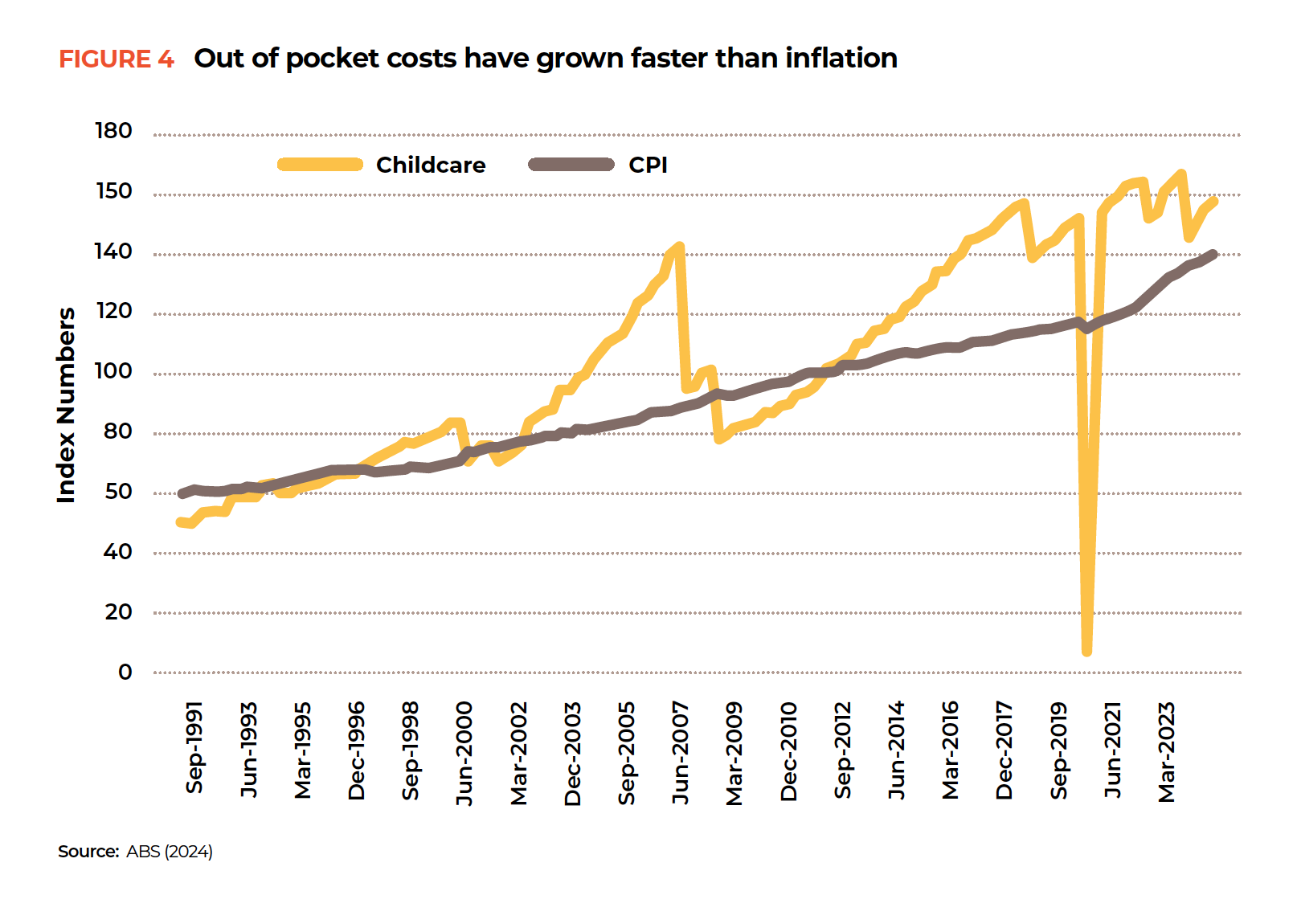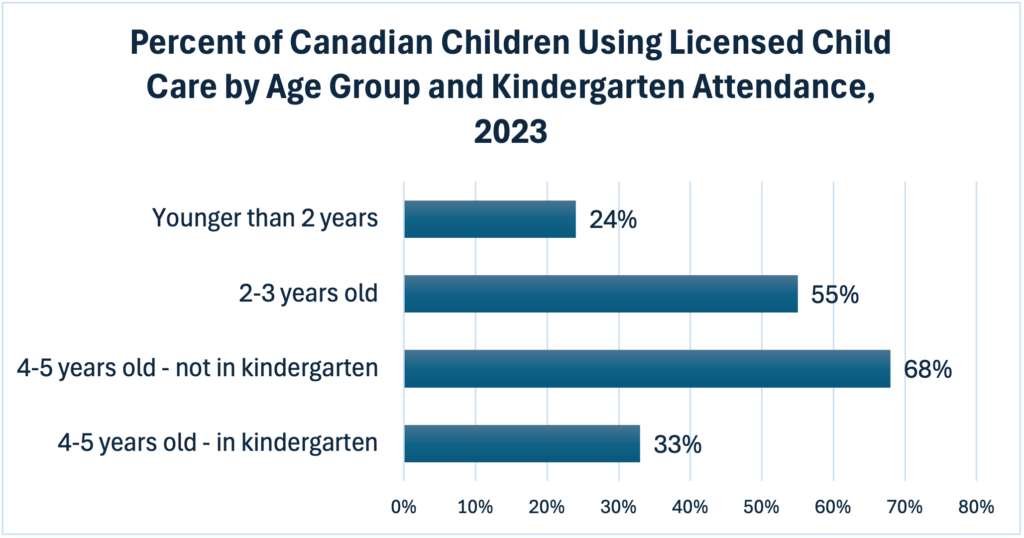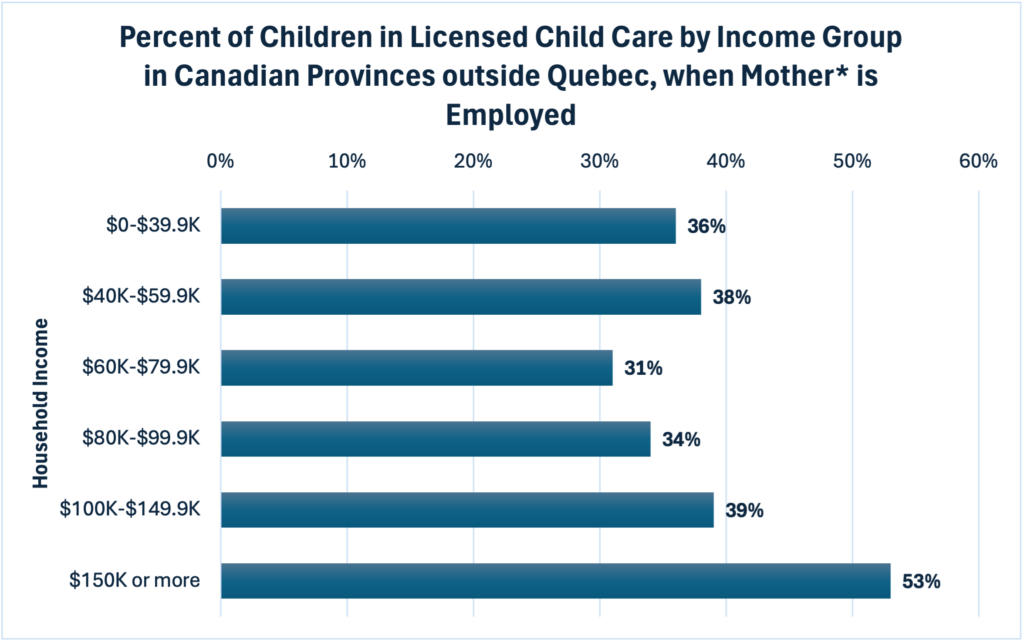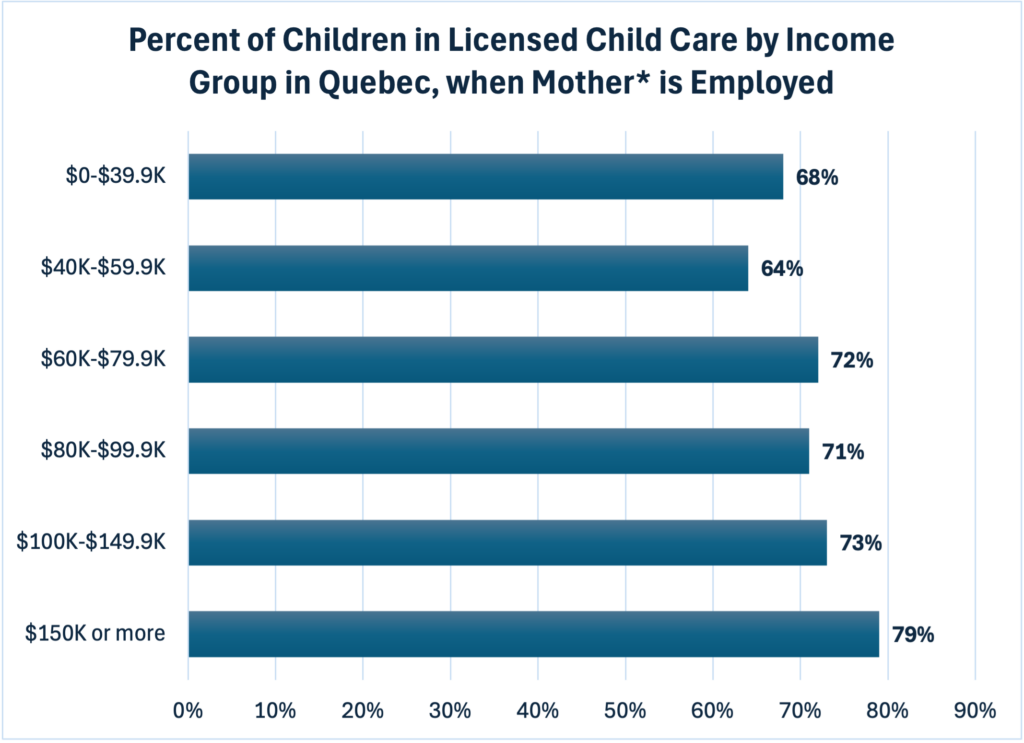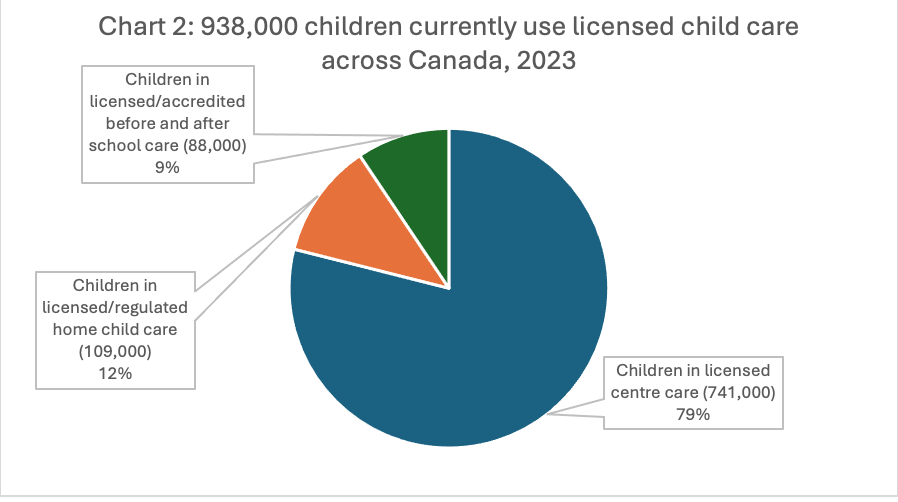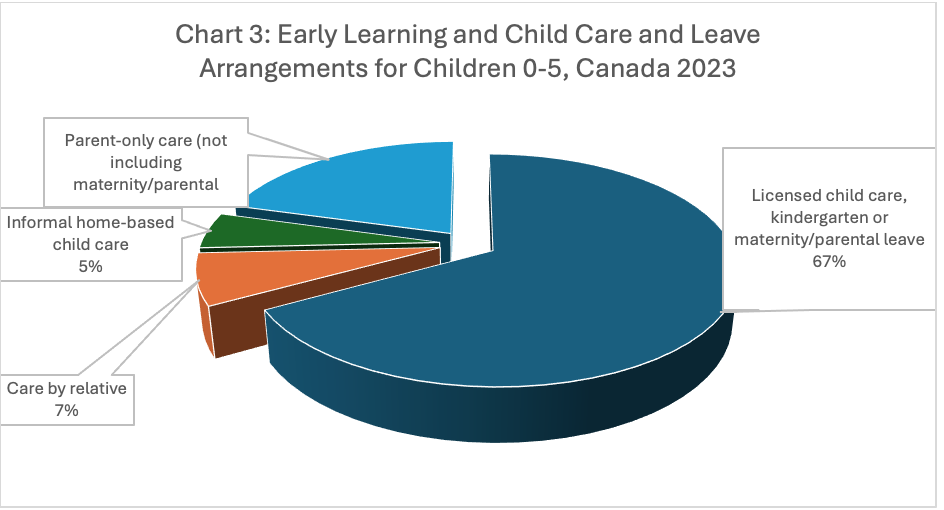Hallelujah! As of August 14th, 2024, there finally is a funding formula to provide some revenue-certainty for child care providers in Ontario. Not a moment too soon, in fact, a year or two too late. As of January 2025, this formula for the provision of operational funding to providers will be implemented to replace the inequitable revenue-replacement model that has existed since April 2022. As the new funding guidelines admit “[w]hile a revenue replacement approach is transparent and simple to implement, it is not responsive to the true cost of providing child care in Ontario.” (p. 7). Revenue replacement was not equitable and it did not facilitate growth of capacity, so we will not mourn its passing.
This marks a new stage of development of the $10 a day child care program in Ontario. And, I am sure that other provinces will be looking closely at this example to see if they should model their funding formulas on this one. Together, we need to assess whether the funding formula is any good and what its strengths and weaknesses are. As with any funding formula, there are many details and understanding how the system will work is not easy. This blog post is a start. In this post, there is a lot of description and only a small amount of opinion. More opinion will follow soon.
I think a question and answer format will be best. And, I will, in this blog post, only describe funding for centres, not for home child care agencies. I will get to family child care in a later post.
- B2C2 and others have called for a funding formula similar to the one in Prince Edward Island; is Ontario’s new funding formula like PEI’s?
Ontario’s funding formula is not like PEI’s. The allowed costs in PEI are based on the provincial wage grid for child care staff with wages varying by qualification level and experience. PEI’s formula encourages hiring of staff with higher qualifications because operating funding is increased to cover actual wage costs. Then, PEI has an allowance of 20% for benefits and there is a provincially-funded pension plan. And PEI’s formula provides the same revenues across the Island for similar centres.
In contrast, Ontario does not have a wage grid for child care staff. Ontario’s new funding formula gives flexibility to a centre to spend its allocation in different ways, but does not, in particular, reward the hiring of more staff who are fully qualified RECEs. Ontario’s benchmark for benefits is only 13.4% for staff and 16.2% for Supervisors and there is no provincially-funded pension plan. And operational funding for centres under the new funding formula in Ontario will be highly variable across different locations.
2. How is the Funding Formula structured?
The structure of the new Ontario child care funding formula is relatively simple, getting more complex as you get into the details. The funding formula is based on calculation of what is called a “Benchmark Allocation”. A Benchmark Allocation, as the Ministry of Education’s funding rules make clear, is supposed to represent “the typical costs of providing quality child care in a geographic region, based on planned operating spaces.” (p. 9) . One of the Ministry’s goals with the new funding and accountability processes is “to gradually shift the overall cost of providing child care … towards more standardized costs, as represented by the benchmark allocations.” (p. 48). On top of the Benchmark Allocation, there is also an allocation for profit or surplus.
Benchmark Allocations, which vary across the province, are designed so that about 50% of existing licensees will have their expected eligible costs fully covered. The other 50% of licensees will not have their costs covered by the regular (benchmark) funding allocation, but legacy centres (those currently and continuously in CWELCC) with higher costs will be eligible for a Legacy Top-Up to this funding. This top-up formula evaluates the 2023 cost structure of centres, along with 2025 evidence of some fixed costs such as rent, insurance and property tax. There is also a provision for cost increases since 2023.
Calculation of the Benchmark Allocation for a centre involves two parts:
- Calculation of the Unadjusted Benchmark Allocation (total of four components)
- This is multiplied by a Geographic Adjustment Factor (GAF) which can move the total up or down.
Once adjusted in this way, our calculation is called the “Benchmark Allocation” for your centre.
3. What About Top-Ups?
That’s not the end of it, though. When the Ministry canvassed existing centres about their actual costs, they found lots of variation. To account for this cost variation, the Ontario funding formula includes a Legacy Top-Up to provide additional revenue for legacy centres with costs higher than their Benchmark Allocation.
In addition, there is another revenue top-up that applies only to new spaces or new centres. This is called a Growth Top-Up and recognizes that the Benchmark Allocation will not necessarily be sufficient to cover operational funding of new capacity. The Growth Top-Up will provide some increased operating revenues to most centres that are new or growing in capacity.
Details on the Top-Ups
- Legacy Top-Up – If you are a legacy centre (you were signed up to CWELCC when this funding formula was born and still are) and your proven costs (according to a formula) are higher than that Benchmark Allocation, your SSM will provide a Legacy Top-Up to cover these supplementary costs.
- Growth Top-Up – In the first year of any expansion, you will be eligible for a Growth Top-Up which recognizes the (higher than benchmark) program costs associated with new spaces that come on stream during the year.
- In years after 2025, a centre that received either of these two top-ups will receive a “Rolling Top-Up” based on the calculated top-ups that were received in 2025. In other words, these top-ups will become permanent in revenue calculations after 2025.
The “Program Cost Allocation” is the name the new funding system will use to describe the sum of your Benchmark Allocation plus any top-ups for which you are eligible
All of the above calculations are based on an annual operating plan for the coming year that each centre submits to its SSM. Funding is determined based on the plans for each centre.
Amongst other things, the operating plan will specify the planned number of operating service days for each age group and the planned number of operating spaces for each age group. In order to calculate the amount of operating money the SSM will give you, the SSM must then subtract the amount of fee revenue (adjusted for enrollment shortfalls) you expect to receive from parents, or on behalf of parents who receive Child Care Subsidy.
It is important to note that funding is not aggregated across centres that have the same licence-holder, so that the funding allocation for a centre has to be spent on the costs of that specific centre. This will, no doubt, cause problems for multi-site operations who are used to planning and funding activities across the group of centres, rather than treating each centre separately.
4. More details about Top-Ups
The funding guidelines describe Legacy Costs this way: “Legacy costs are costs that are consistent with legacy centres’/agencies’ 2023 cost structures, adjusted for eligibility, cost escalation, and changes to operating practices and fixed costs.” Legacy Top-Ups are designed to ensure that Legacy Costs are covered going forward. In applying for a legacy top-up, centres would provide an audited 2023 Statement of Operations and other financial information to their SSMs to calculate the cost of eligible services (e.g., for children 0-5 rather than 6-12) at the level of an individual licence. From these costs, ongoing costs would be scaled up to reflect cost increases between 2023 and 2025. This would allow the calculation of the amount by which Program Cost revenues need to be scaled up to cover higher costs. This is the Legacy Top-Up. The Legacy Top-Up will take account of changes in spaces, days and hours of service over this period.
There is also a Growth Top-Up for all centres that are adding new spaces. Before the calendar year begins, the annual revenues of each centre are determined by their SSM based on operational plans filed with the SSM. For centres that expand licensed capacity during the year, an adjustment needs to be made. This is the Growth Top-Up. The calculation of revenues for these new spaces is largely similar to the calculation of the Benchmark Allocation, but applied only to the new spaces and with the allocation raised by a Growth Multiplier. Importantly, there is no Legacy Top-Up on new spaces, even if other centres operated by the same licensee receive Legacy Top-Ups because of elevated costs. The new Benchmark Allocation is multiplied by a Growth Multiplier. This Growth Multiplier may add as little as 0% to the funding for these new space (City of Cornwall) or as much as 30% (County of Lanark, United Counties of Prescott and Russell, County of Renfrew, Rainy River DSSAB), based on geography. The typical value of the Growth Multipliers is about 15%.
Once these top-ups are added to the Benchmark Allocation for an eligible centre, the total is called the Program Cost Allocation.
5. What about Profit or Surplus?
The new Ontario funding formula has one more major component. It builds in a separate allocation which goes as profit for owners or as surplus for non-profit or public child care centres. Profit/surplus therefore does not depend on good performance, but is a guaranteed payment. On the other hand, the formula provides a limitation on the amount of profit that can be earned in any year out of the government portion of revenues.
There are three parts to the calculation of profit/surplus (which the Ministry guidelines call “allocation in lieu of profit/surplus”). There is a base amount, a part that is 3.5% times the amount of the Benchmark Allocation and a part that is 4.25% times the Program Cost Allocation (which is the sum of the Benchmark Allocation and the top-ups). These three parts are added together to get the total Profit/Surplus allocation. Both the Benchmark Allocation and the Program Cost Allocation are influenced by the Geographic Adjustment Factor. That means that the amount of Profit/Surplus is also affected by this GAF.
6. How are the individual parts calculated that make up the Benchmark Allocation?
There are four components that are summed together to get the Unadjusted Benchmark Allocation: the Program Staffing Component (related to the wages and benefits of program staff), the Supervisor Component (related to the wages and benefits of the Supervisor), the Accommodation Component, and the Operations Component (related to all other costs, including wages and benefits of non-program staff). These are calculated based on the number of licensed spaces for different age groups, the operating capacity this year for different age groups, the proportion of staff in your centre that are delivering CWELCC-eligible services, the number of service-days of child care you provide to each age group over the year and a few other things. All of these calculations are based on your plans for your child care program in the coming year, not on past numbers.
In effect, each of the four components is adjusted according to a Geographic Adjustment Factor, although this calculation is done at the end after the four components are summed together. In other words, if you are in what the Ministry’s data says is a high cost area, the amounts for each element of this allocation will be boosted. If you are in what the Ministry’s data says is a lower cost area, the amounts for each element of the allocation will be lowered.
For example, centres in Toronto have a Geographic Adjustment Factor of 1.07; centres in Kingston have a Geographic Adjustment Factor of 0.79. So, the benchmark revenue allocation in a Toronto centre will be boosted by 7%. The benchmark revenue allocation in Kingston will be reduced by 21%. These Geographic Adjustment Factors are said to represent differences in the costs of providing child care services in different parts of the province.
7. Can you provide a simple example of how the Benchmark Allocation is calculated?
(There are some helpful worked-out examples from page 55 onwards in Schedule D of the Funding Guidelines. But, the example below provides some additional words of explanation).
As an example, think of a child care centre in a community setting in Toronto that has 48 preschoolers and no other children, just to make calculations simple. We will assume that the licensed capacity and actual operating capacity of the centre is 48 children. The per-diem benchmark allowed in the funding formula for 2025 for preschoolers (full day child care for children over 2.5 years) is $39.23. Assume the centre will be in operation 261 days per year.
To get the amount of the Program Staffing component, we multiply 48 preschoolers X 261 service-days per year X a per-diem of $39.23. X an ancillary costs multiplier (13.4% to cover mandatory benefits like CPP/EI/EHT/WSIB). In the case of our example, that gives us an amount of $557,330.88.
To get the Supervisor component of the Program Costs, we multiply 261 service-days per year X a Supervisor per-diem of $301.38 X a Supervisor ancillary costs multiplier (16.2% to cover mandatory benefits). That gives us a total of $91,403.13.
The allowance for Accommodation costs is based on the number of licensed spaces, independent of current operating capacity. In our example, there are 48 licensed spaces. The annual per-space benchmark varies according to the age category of these licensed spaces, but also by whether the centre is in a community setting or is located in a public school. For preschool spaces in a community setting, the benchmark is $1,735.54 per space. For this centre, the Accommodation costs component would be 48 X $1,735.54 = $83,305.92.
The Operations Costs component has both a fixed and a variable part to the calculations, and varies according to whether the centre is in a community setting or a public school. The fixed part is based on the number of licensed spaces and the annual number of days of service and this varies by age category of children. The variable part is based on the planned operating capacity and the number of days of service and this also varies by age category of children. The community-setting benchmark for fixed operations costs for preschoolers is $15.09 per licensed space-day. The community-setting benchmark for variable operations costs for preschoolers is $1.64 per operating space-day. So, for our example, the fixed part of operations costs would be 48 X 261 X $15.09 = $189,047.52. The variable part of operations costs would be 48 X 261 X $1.64 = $20,545.92. The total allocation for operations costs would be $209,593.44.
If we sum the allocations for the four components in our example, we get $557,330.88 + $91,403.13 + $83,305.92 + $209,593.44 = $941,633.37. This is the Unadjusted Benchmark Allocation.
This calculation would be the same for any centre with 48 preschoolers anywhere in the province. However, the Geographic Adjustment Factor (GAF) will change this allocation in every location. Toronto has a Geographic Adjustment Factor of 1.07 (i.e., relatively high typical costs) so multiply the Program Costs number by 1.07 to get $1,007,547.71. With the GAF applied this is called the “Benchmark Allocation”. To see the importance of this Geographic Adjustment Factor: if this same centre was in Kingston, the Benchmark Allocation would be $743,890.36.
It is important to note that this allocation can be spent in any way the centre thinks best to provide services for children. It can pay lower or higher wages, more or less in benefits, more or less to the Supervisor, more or less in mortgage or rental costs, more or less in the costs of operations, as long as these expenditures are judged to be eligible expenditures. The flexibility in spending is potentially positive, but without a wage grid (there is only a wage floor for RECEs), it means that unscrupulous operators could cut corners on compensation and quality in order to spend money in other ways. That would be undesirable, of course.
8. What about the calculation of profit/surplus for this centre?
The base amount of profit/surplus is $6,000 annually. For our example centre of 48 preschoolers in Toronto, the part based on the Benchmark Allocation would be 0.035 X $1,007,547.71 = $35,264.17. Because we are assuming no Legacy or Growth Top-Ups for this centre, the Program Cost Allocation is the same as the Benchmark Allocation. Therefore, the part of profit/surplus based on the Program Cost Allocation is 0.0425 X $1,007,547.71= $42,820.78. The sum of these three parts is the allocation in lieu of Profit/Surplus, which is $84,084.95.
The total revenue of this centre during the year would be the Benchmark Allocation of $1,007,547.71 plus the Profit/Surplus allocation of $84,084.95, which equals $1,091,632.66. Profit/Surplus would be 7.7% of total revenue. Another way of thinking of it: profit in this example is a markup of 8.3% over the Benchmark Cost Allocation.
Not all of this revenue would come from the SSMs of course. The planned amount to be received from parents or on behalf of parents (adjusted for enrollment) would be subtracted from this total revenue calculation to get the annual funds received from the SSM.
9. Does the new funding formula provide enough funding?
This, of course, is the big question. I need you to help me answer this. I have some examples in the table below and they give calculations of the total amount of revenue centres will have, based on their size and location in the province. The examples are simple and do not include provision of before-and-after school care for kindergarten children. There are three centre sizes:
- 49 children: 10 infants, 15 toddlers, 24 preschoolers
- 73 children: 10 infants, 15 toddlers, 48 preschoolers
- 88 children: 10 infants, 30 toddlers, 48 preschoolers
These centres are located in Toronto, Ottawa and Windsor. Toronto has a Geographic Adjustment Factor (GAF) of 1.07. Ottawa has a GAF of 0.94. Windsor has a GAF of 0.80. These Geographic Adjustment Factors play a big role in the revenue totals that centres will receive and these examples are a good indication of the range of revenue values that will affect centres across Ontario, urban and rural, north and south. The other factor that affects funding is whether the centre is located in a community or in a publicly-funded school. This affects funding allocations for Accommodation and for Operations.
This table calculates the total annual revenue of these centres. Total revenue includes both the amount to cover costs and the amount to cover profit or surplus. Some of total revenue will come in funding from the SSM and some will come from parent revenue (or child care subsidy revenues provided on behalf of parents). As parent fees go down, a greater percentage of revenues will come from government and a smaller percentage from parents, but the total revenue would remain the same (unless benchmarks are changed).
Table 1: Total Annual Revenues of Centres of Different Sizes and Locations
Under Ontario’s New Funding Formula – Community-Based and School-Based Centres
| Toronto | Ottawa | Windsor |
| Community-based or School-based centre | Community | Community | Community |
| Geographic Adjustment Factor - GAF | 1.07 | 0.94 | 0.8 |
| Total Revenue – 49 space centre | $1.394m | $1.226m | $1.044m |
| Total Revenue – 73 space centre | $1.884m | $1.656m | $1.410m |
| Total Revenue – 88 space centre | $2.283m | $2.006m | $1.709m |
| Toronto | Ottawa | Windsor |
| Community-based or School-based centre | School | School | School |
| Geographic Adjustment Factor - GAF | 1.07 | 0.94 | 0.8 |
| Total Revenue – 49 space centre | $1.291m | $1.135m | $0.967m |
| Total Revenue – 73 space centre | $1.731m | $1.522m | $1.296m |
| Total Revenue – 88 space centre | $2.098m | $1.844m | $1.570m |
Notes:
- Total Revenue figures in the table are in millions of dollars of revenue annually, including both operating funding from governments and parent fees.
- 49 space centre has 10 infants, 15 toddlers, 24 preschoolers, all full-day
- 73 space centre has 10 infants, 15 toddlers, 48 preschoolers, all full-day
- 88 space centre has 10 infants, 30 toddlers, 48 preschoolers, all full-day
Notice that for the same sized centre, a location in Toronto will get revenues which are hundreds of thousands of dollars higher than a location in Windsor (or many other places across the province). Are true underlying costs that different in different locations?
And, are these amounts of total revenue enough to operate centres and provide good quality child care? I don’t have enough evidence yet to draw a conclusion, but I’m happy to hear from centre directors about your example and experience.
These calculations are based on Ontario’s 2025 benchmarks. Benchmarks can change in future years. Current centres will be potentially eligible for Legacy Top-Ups. And, allocations for new centres will be affected by Growth Multipliers (but not Legacy Top-Ups).
10. What is the role of the SSMs?
The SSMs have many roles in relation to planning and operationalizing growth plans and assisting and communicating with child care providers in a range of different ways.
If we focus specifically on their role in relation to funding in 2025, the SSMs have to:
- Receive operational plans from each operator/each centre. Operating plans will include planned operating spaces for each age group, planned number of service days for each age group, number of hours of service for each age group, copy of parent handbook.
- Collect legacy data from those operators claiming a Legacy Top-Up. Legacy data in 2025 will include specific evidence of any fixed costs (especially accommodation costs), the operating budget for 2025, 2023 audited financial statements and any related financial reports to support claim.
- Calculate the Program Cost Allocations for each centre including the Legacy Top-Ups, the Growth Top-Ups and the Profit/Surplus for each centre.
- Schedule advance payments for each centre based on these calculated Allocations
- Select centres that will have their reported costs reviewed in a cost review (not the same as the Direct Engagements on Compliance) and carry out cost reviews
- Accept and process applications for in-year changes in funding
- Collect spending attestations and standardized financial reports from each centre
- Compare Allocations to Actual Costs/Spending and promptly recover overpayments to centres and refund these to Ministry.
11. What are the key issues with this new funding formula?
The biggest issue with the funding formula is one that is not yet answered. In new centres and new spaces, will there be enough funding available for providers to fund the provision of good quality care with educators and other staff that are fairly and reasonably compensated?
The Legacy Top-Ups in the funding formula are designed to ensure that existing centres with costs that are higher than the median will not have to close their doors; their costs will apparently be compensated by revenue supplements that become permanent through Rolling Top-Ups. That’s obviously a good thing, but Legacy Top-Ups are not available to new centres or even to new spaces in existing centres.
So, in judging the adequacy of revenues provided by this funding formula going forward, we need to ignore Legacy Top-Ups. They exist for Legacy centres (i.e., current centres), but not for new centres. The real question is “for new spaces (growth), will the revenues be adequate to provide good child care?”. At this point, we don’t have a clear answer. What we do know is that new spaces will only be eligible for the Benchmark Allocation plus the Growth Top-Up plus the Allocation in Lieu of Profit/Surplus.
As for the rest of the key issues with this new funding formula, that’s a topic for another blog. Coming soon.

